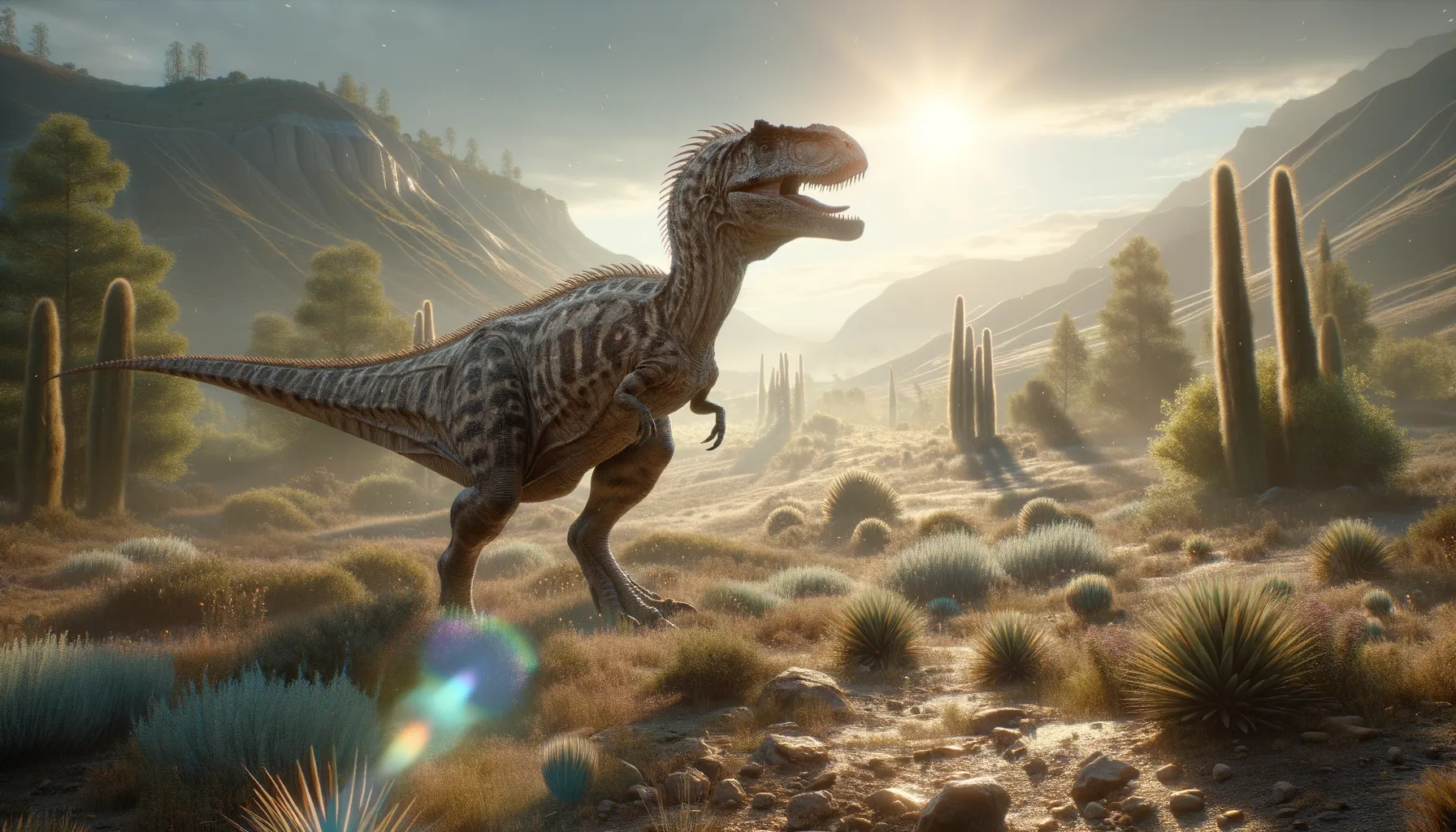
Crosbysaurus
Discover the mystery of ancient teeth!
Period
Triassic
Length
Approximately 3 meters long.
Height
Estimated to be around 1 meter tall.
Weight
Relatively lightweight for a dinosaur.
Crosbysaurus was a small dinosaur that lived during the Triassic period. It is known primarily from its fossilized teeth, which suggests it was a herbivore. This dinosaur roamed what is now the western United States, adapting to a semi-arid climate. While not much is known about this species, its discovery helped paleontologists understand the diversity of prehistoric life in North America during the late Triassic.
Diet
Crosbysaurus was likely a herbivore, subsisting on a diet of plants available during the Triassic. Its teeth suggest it was well-adapted to processing tough plant material.
Hunting
Being a herbivore, Crosbysaurus did not hunt other animals. Instead, it likely foraged for plants, using its specialized teeth for grinding and eating various types of vegetation.
Environmental challenges
Crosbysaurus lived during a time of significant climatic fluctuations which affected its habitat. Periods of dryness and changing vegetation landscapes were among the challenges it faced. Competition with other herbivorous species for limited resources would have been another challenge it needed to navigate.
Speed
Estimated to be slow-moving.
Lifespan
Potentially a few decades.
First discovery
Discovered in the late 20th century in Utah.
Fun Facts
- Crosbysaurus lived around 220 million years ago during the Late Triassic period.
- This dinosaur was a small herbivore, meaning it fed on plants.
- Crosbysaurus was discovered in the United States, particularly in the southwestern part.
- Despite its small size, it played an important role in its ecosystem as a plant-eater.
- The name 'Crosbysaurus' honors Crosby, which could refer to a specific individual or place related to its discovery.
- Crosbysaurus is known mostly from its teeth, which were leaf-shaped and ideal for slicing through vegetation.
Growth and Development
Like many prehistoric reptiles, Crosbysaurus likely experienced steady growth throughout its life. As it developed from a young hatchling to an adult, it would have needed to learn to evade predators and find sufficient food to support its growth.
Habitat
Crosbysaurus inhabited what we believe to be a semi-arid climate with scattered vegetation. Its environment would have included diverse plant life on which it relied for food. Nearby water sources would have attracted various fauna, influencing the interactions and ecosystem of Crosbysaurus.
Interaction with other species
As a herbivore, Crosbysaurus coexisted with other plant-eating species, likely competing for the same resources. Predatory dinosaurs of the time might have posed a threat, impacting its behavior and defensive adaptations. Its presence would have shaped the ecosystem by influencing plant distribution through its foraging habits.
Natural lifespan
Crosbysaurus could have a natural lifespan spanning decades under ideal conditions.
Reproduction
Crosbysaurus, like many dinosaurs, likely reproduced by laying eggs. Evidence suggests that it may have built nests on the ground, where it protected and incubated its offspring until hatching. This behavior would have been crucial for its reproductive success in harsh environments.
Social behaviour
It is presumed that Crosbysaurus might have shown some form of social behavior, particularly during breeding seasons. Such interactions could have included group foraging, which would enhance their ability to locate resources. However, there may have been periods of solitary behavior driven by resource scarcity.
Fossil locations
Fossils of Crosbysaurus, mainly teeth, have been located in the Chinle Formation of Utah. These fossil finds are limited but offer valuable insight into the diverse paleofauna of the Triassic period. The discovery of such remains contributes significantly to understanding the distribution and lifestyle of early dinosaurs.
